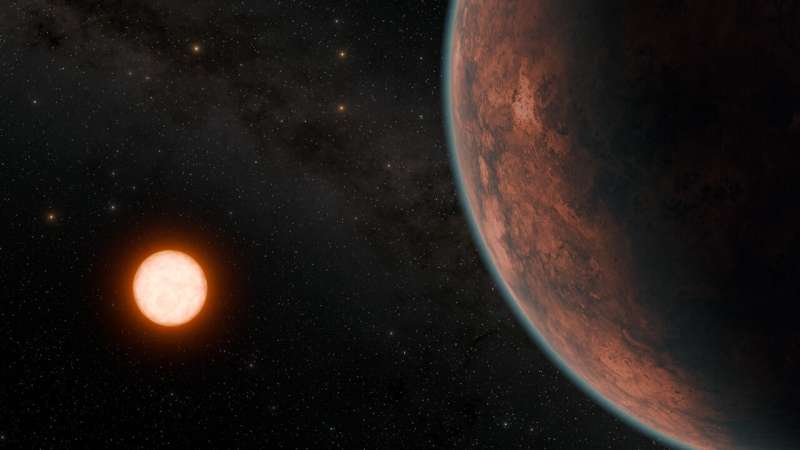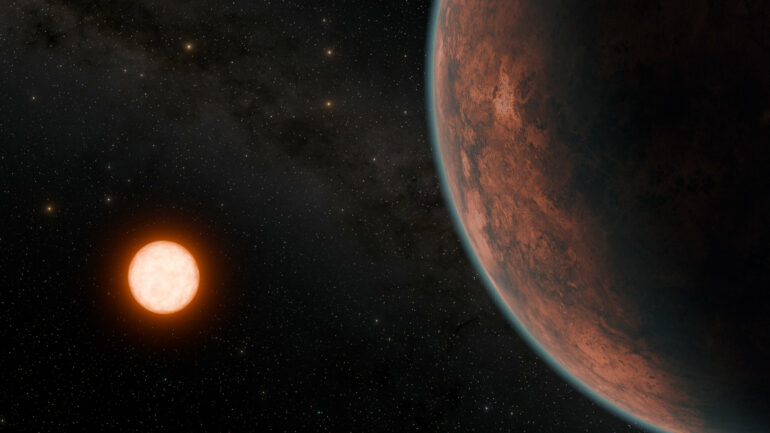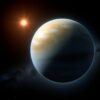The discovery of a planet similar to Venus around a star in the neighborhood of the solar system raises hopes that astronomers may someday unlock the secret to why life appeared on Earth.
The study of life in the universe is difficult because we have only one example of a planet where life has been confirmed: Earth. It is difficult to say which characteristics of Earth are required for life to appear, and which are irrelevant. Until we find an “Earth twin” where the conditions for life also appeared, the best astronomers can do is study “evil twins,” planets with initial conditions similar to Earth that turned out very differently, with environments unsuitable for life.
In the solar system, Venus and Mars provide two examples of lifeless “evil twins.” But with only two examples, there is still much uncertainty about how stringent or lax the conditions for life may be.
Since the 1990s, more than 5,500 planets orbiting around stars other than the sun have been discovered. However, most of these planets are hundreds of light years away from Earth, making it challenging to study them in detail.
In this research, the team found and characterized a new planet, called Gliese 12 b, based on data from NASA’s TESS space telescope; the MuSCAT2 and MuSCAT3 cameras, which were developed by the Astrobiology Center (ABC) in Japan and the University of Tokyo; and the Subaru Telescope of the National Astronomical Observatory of Japan.

Artist’s conception of the newly discovered planet Gliese 12 b, which is orbiting a red dwarf star located 40 light-years away. This artist’s conception assumes that the planet retains a tenuous atmosphere. Future follow-up observations will clarify what kind of atmosphere the planet actually retains. © NASA/JPL-Caltech/R. Hurt (Caltech-IPAC)
Gliese 12 b is close to the solar system, being located only 40 light-years away in the direction of the concentration Pisces. This makes Gliese 12 b an ideal target to study with NASA’s James Webb Space Telescope and future 30-m class telescopes.
The research is published in The Astrophysical Journal Letters.
So far, the international team led by scientists from the Astrobiology Center in Japan, the University of Tokyo, the National Astronomical Observatory of Japan, and Tokyo Institute of Technology has figured out that Gliese 12 b has an orbital period, that is to say one year on the planet, of only 12.8 days.
The planet has a radius that is only 4% smaller than Earth’s radius, and is less than 3.9 times the mass of Earth. Gliese 12 b receives 1.6 times more radiation from its host star than Earth receives from the sun. For comparison, Venus receives 1.9 times more radiation than Earth.
Based on this data, the team believes that Gliese 12 b is an “evil twin,” more like Venus than like Earth. But they cannot rule out the possibility that Gliese 12 b is an “Earth twin” with liquid water on its surface. Further observations will determine if Gliese 12 b is an “evil twin” or an “Earth twin.”
In either case, study of Gliese 12 b will give us a better idea of the prerequisites for a life-friendly environment to appear on a planet.
More information:
Masayuki Kuzuhara et al, Gliese 12 b: A Temperate Earth-sized Planet at 12 pc Ideal for Atmospheric Transmission Spectroscopy, The Astrophysical Journal Letters (2024). DOI: 10.3847/2041-8213/ad3642
Provided by
National Institutes of Natural Sciences
Citation:
Earth 2.0 or its evil twin? Discovery of Earth-sized planet could shed light on conditions necessary for life (2024, May 23)



